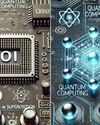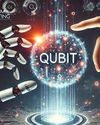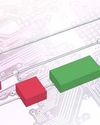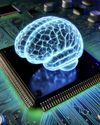
The technology ecosystem of Internet of Things (IoT) is complex, and includes hardware, connectivity, platforms, middleware, analytics, operating systems, applications, and services.
As per IDC, there will be 41.6 billion connected IoT devices or 'things', generating 79.4 zettabytes (ZB) of data in 2025. Sixty-four per cent of those surveyed think open source is significant in deploying IoT, as per the IDC Global IoT DecisionMaker Survey. According to a survey by W3.Org, 91% of IoT developers use open source software, open hardware, or open data in at least one part of their development stack.
According to Statista, the total installed base of Internet of Things (IoT) connected devices is projected to amount to 75.44 billion worldwide by 2025. By 2030, IoT could enable US$ 5.5 trillion to $12.6 trillion in value globally, including the value captured by consumers and customers of IoT products and services, as per McKinsey.
With billions of devices generating trillions of bytes of data, it is very crucial for enterprises to organise, store and work with all the data that is generated.
In general, IoT applications leverage both relational and non-relational (NoSQL) databases. The selection of the type of the database depends on the application type. In most of the cases, a combination of both the databases can be utilised.
Most IoT applications are heterogeneous and domain-centric. Choosing the most efficient database for these applications can be challenging. The important parameters for choosing the right database for IoT applications are scalability, availability, ability to handle huge amounts of data, high processing speed, schema flexibility, integration with varied analytical tools, security and costs.
Open source adoption for IoT
Diese Geschichte stammt aus der July 2023-Ausgabe von Open Source For You.
Starten Sie Ihre 7-tägige kostenlose Testversion von Magzter GOLD, um auf Tausende kuratierte Premium-Storys sowie über 8.000 Zeitschriften und Zeitungen zuzugreifen.
Bereits Abonnent ? Anmelden
Diese Geschichte stammt aus der July 2023-Ausgabe von Open Source For You.
Starten Sie Ihre 7-tägige kostenlose Testversion von Magzter GOLD, um auf Tausende kuratierte Premium-Storys sowie über 8.000 Zeitschriften und Zeitungen zuzugreifen.
Bereits Abonnent? Anmelden

Amazon Bedrock: A Boon for the Financial Services Industry
Amazon Bedrock is a fully managed service that provides access to foundation models from top AI providers, enabling organisations to build and scale generative AI applications. It is specifically designed to bring AI solutions to the financial sector. Let's explore all that it can do...

Quantum-Safe VPNs: The Future of Secure Communication
As quantum computing continues to advance, it poses a significant threat to traditional cryptographic algorithms that secure our digital communications. Virtual private networks (VPNs), which rely heavily on encryption, are particularly vulnerable. Quantum-safe VPNs utilise post-quantum cryptographic algorithms to protect against quantum attacks.

Popular Open Source Toolkits for Quantum Machine Learning
Quantum machine learning is becoming increasingly popular due to its ability to solve the complex problems of the AI age. Here are a few open source libraries and frameworks that help with quantum computations.

Quantum Computing: Harnessing Open Source for Innovation and Accessibility
We explore how open source initiatives are shaping the future of quantum computing, making it more accessible and driving innovation through collaboration.

How Quantum Computing Differs from Classical Computing
Despite being in its infancy, quantum computing has numerous potential applications in modelling, cybersecurity, AI/ML, and other fields. But how do quantum and classical computing compare with each other? Let's find out...

From Bits to Qubits: The Growth Story of Quantum Computing
Quantum computing may still be in the early stages of evolution, but its potential impact on everyday life is significant. We delve into the key concepts behind it, the reasons for its rapid growth, and how global advancements are shaping its future.

Pytket: A Comprehensive Guide to Quantum Circuit Design
Pytket stands out as a powerful toolkit in the realm of quantum computing, offering a suite of features that cater to both researchers and industry practitioners. Its key strengths include optimisation, platform-agnostic support, flexible quantum circuit design and hybrid algorithm support. These features make Pytket a versatile tool for various quantum computing applications, from machine learning and cryptography to optimisation problems in industrial settings.

Cirq: The Open Source Framework for Programming Quantum Computers
Explore the key features, capabilities, and impact of Cirq, an open source quantum computing framework developed by Google, on the quantum programming landscape.

The Role of Open Source in Accelerating Quantum AI
Here's an overview of how open source frameworks are being utilised to build quantum machine learning models, including quantum neural networks and quantum kernel methods. The challenges and future directions in the quantum AI landscape are also discussed.

Quantum Machine Learning: An Overview
Quantum machine learning (QML) is a burgeoning field at the intersection of quantum computing and artificial intelligence. In recent years, the integration of quantum mechanics with machine learning algorithms has sparked substantial interest among researchers and technologists alike. Here's a quick look at the essentials of creating quantum algorithms for AI models, their practical use cases on open source platforms, and best practices for implementing these advanced algorithms.